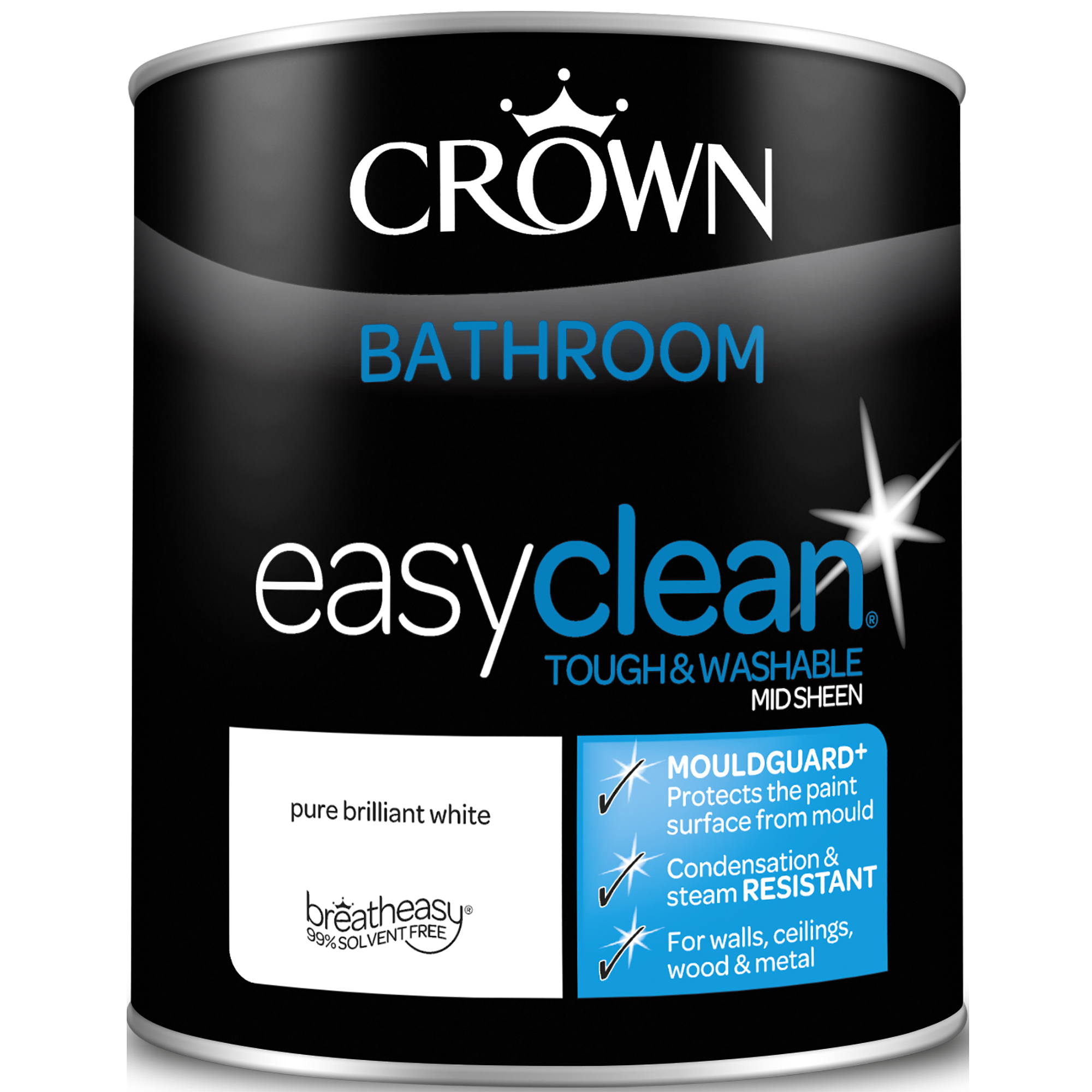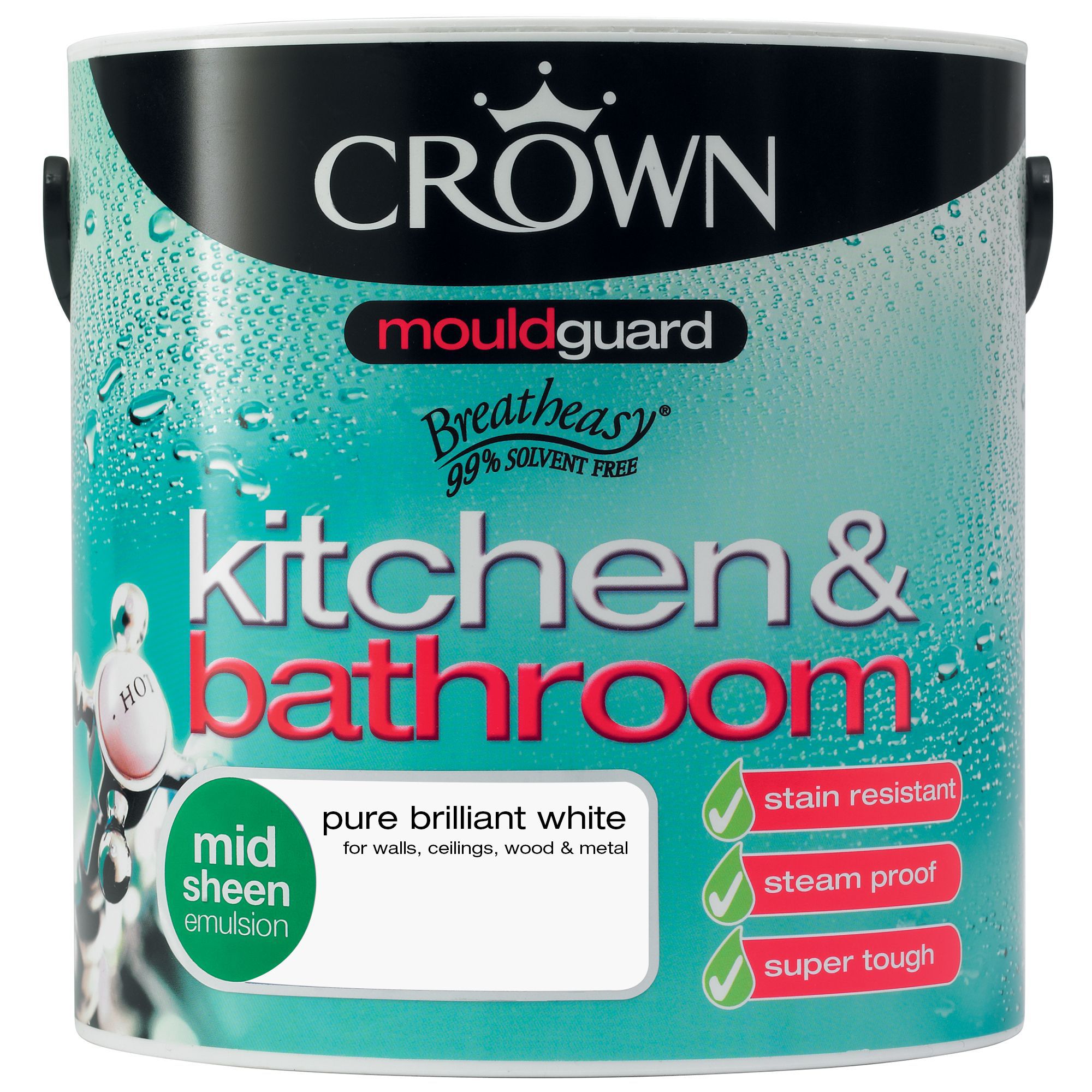The Crown Bathroom and Kitchen Paint Trend
Crown Bathroom and Kitchen paint has become increasingly popular in recent years, with homeowners seeking durable, stylish, and easy-to-clean solutions for their most-used spaces. Crown’s commitment to quality and innovation has made their paints a go-to choice for both professional decorators and DIY enthusiasts.
Key Features of Crown Bathroom and Kitchen Paint
Crown Bathroom and Kitchen paint is specifically formulated to withstand the unique challenges of these high-traffic areas. The key features that contribute to its popularity include:
- Moisture Resistance: Crown’s bathroom and kitchen paints are designed to resist moisture and prevent mold and mildew growth, ensuring a long-lasting finish in humid environments.
- Durability: These paints are highly durable, resisting scratches, scuffs, and stains, making them ideal for high-traffic areas prone to wear and tear.
- Easy Cleaning: Crown Bathroom and Kitchen paints are formulated for easy cleaning, allowing homeowners to wipe away spills and marks without damaging the paint finish.
- Wide Range of Colors: Crown offers a vast selection of colors, from classic neutrals to bold and vibrant hues, allowing homeowners to personalize their bathroom and kitchen spaces to their liking.
Successful Bathroom and Kitchen Paint Projects Using Crown Products, Crown bathroom and kitchen paint
Crown Bathroom and Kitchen paints have been used in numerous successful projects, transforming spaces into stunning and functional areas.
- Modern Bathroom Makeover: A homeowner used Crown’s “Calm Blue” to create a serene and modern bathroom space. The cool blue tones complemented the white fixtures and added a touch of sophistication to the room.
- Classic Kitchen Refresh: A homeowner used Crown’s “Creamy White” to create a timeless and elegant kitchen. The soft white paint provided a neutral backdrop for the homeowner’s colorful kitchen accessories and appliances.
- Bold and Vibrant Kitchen: A homeowner used Crown’s “Tangerine Burst” to add a pop of color to their kitchen. The vibrant orange paint energized the space and created a warm and inviting atmosphere.
Choosing the Right Crown Paint Color for Different Bathroom and Kitchen Styles
Selecting the right paint color is crucial for achieving the desired aesthetic for your bathroom and kitchen. Here are some tips for choosing the perfect Crown paint color for different styles:
- Modern: For a modern bathroom or kitchen, consider cool tones like gray, blue, or green. These colors create a clean and contemporary feel.
- Traditional: For a traditional bathroom or kitchen, opt for warm neutrals like cream, beige, or light brown. These colors create a timeless and elegant atmosphere.
- Rustic: For a rustic bathroom or kitchen, choose earthy tones like brown, green, or orange. These colors evoke a sense of warmth and natural beauty.
- Contemporary: For a contemporary bathroom or kitchen, consider bold and vibrant colors like red, yellow, or purple. These colors add a touch of personality and make a statement.
Choosing the Right Crown Paint for Your Bathroom and Kitchen

Selecting the right Crown paint for your bathroom and kitchen can be a daunting task, given the wide array of options available. The choice of paint type is crucial, as it directly affects the final look, durability, and ease of maintenance. Crown offers a diverse range of paints, each tailored for specific needs and surfaces. To navigate this selection process, we will delve into the properties of various Crown paint types and their suitability for different bathroom and kitchen surfaces.
Acrylic Paints
Acrylic paints are a popular choice for bathrooms and kitchens due to their versatility and durability. They offer a smooth, washable finish that can withstand the humidity and moisture common in these spaces. Acrylic paints are also relatively easy to apply and clean up, making them a convenient option for DIY projects.
Emulsion Paints
Emulsion paints, also known as water-based paints, are another common choice for bathrooms and kitchens. They offer a matte finish, which helps to hide imperfections on walls and ceilings. Emulsion paints are also breathable, allowing walls to breathe and preventing moisture build-up. This makes them a suitable choice for bathrooms with poor ventilation.
Gloss Paints
Gloss paints are known for their high-shine finish, which adds a touch of elegance to bathrooms and kitchens. They are also highly durable and washable, making them a good choice for areas that are prone to splashes and spills. However, gloss paints can highlight imperfections in the surface, so careful preparation is required before application.
Crown Paint Types and Their Properties
The following table summarizes the key properties of different Crown paint types and their suitability for various bathroom and kitchen surfaces:
| Paint Type | Properties | Suitable Surfaces |
|---|---|---|
| Acrylic | Durable, washable, smooth finish, easy to apply | Walls, ceilings, trim, cabinets, doors |
| Emulsion | Matte finish, breathable, washable, easy to apply | Walls, ceilings, trim |
| Gloss | High-shine finish, durable, washable, highlights imperfections | Trim, cabinets, doors |
Applying Crown Bathroom and Kitchen Paint

Now that you’ve chosen the perfect Crown Bathroom and Kitchen paint for your project, it’s time to get your hands dirty (figuratively, of course). Applying paint correctly is crucial for achieving a professional-looking finish that will stand the test of time. Let’s dive into the steps involved in prepping your surfaces and applying your paint like a pro.
Preparing Surfaces for Painting
Before you even think about picking up a brush, you need to make sure your surfaces are ready to accept the paint. This involves a few essential steps that will ensure a smooth, even finish and prevent peeling or cracking down the line.
- Clean the Surface: Start by giving your bathroom or kitchen walls, trim, and ceilings a thorough cleaning. Use a mild detergent and warm water to remove dirt, grease, and grime. For stubborn stains, try a specialized cleaner designed for the specific material you’re working with. Don’t forget to let the surfaces dry completely before moving on to the next step.
- Sanding: Sanding helps create a smooth, even surface for the paint to adhere to. Use fine-grit sandpaper to gently smooth out any rough spots, imperfections, or previous paint layers. For glossy surfaces, use a sanding block to create a slightly rough texture that will help the paint stick better. Always sand in the direction of the wood grain for a natural finish.
- Priming: Priming is a crucial step, especially when painting over bare wood, previously painted surfaces, or areas with stains. A primer helps create a uniform surface for the paint to adhere to, preventing uneven color absorption and ensuring a smooth, even finish. Choose a primer specifically designed for bathrooms and kitchens, as these primers often contain mildewcide and moisture-resistant properties.
Applying Crown Bathroom and Kitchen Paint
With your surfaces prepped and ready, it’s time to unleash your inner artist! Crown Bathroom and Kitchen paint can be applied using a brush, roller, or spray gun. Each method has its advantages and disadvantages, so choose the one that best suits your project and comfort level.
- Using a Brush: Brushes are ideal for detailed work, like trim, corners, and hard-to-reach areas. Choose a brush with a high-quality bristle that won’t shed and is specifically designed for the type of paint you’re using. Dip the brush about one-third of the way into the paint, tap the excess on the rim of the can, and then apply the paint in smooth, even strokes. Overlap each stroke slightly to ensure a smooth finish. Avoid using too much pressure, as this can lead to brush marks.
- Using a Roller: Rollers are great for covering large areas quickly and efficiently. Choose a roller with a nap length that is appropriate for the texture of your surface. For smooth surfaces, use a short-nap roller. For textured surfaces, use a longer-nap roller. Load the roller with paint, using a roller tray, and then apply the paint in smooth, even strokes. Overlap each stroke slightly to ensure a smooth finish. Avoid using too much pressure, as this can lead to paint splatters.
- Using a Spray Gun: Spray guns are the fastest and most efficient way to apply paint, but they require more skill and practice. Choose a spray gun that is specifically designed for the type of paint you’re using. Before using the spray gun, practice on a scrap piece of wood to get a feel for the spray pattern. When applying the paint, hold the spray gun at a distance of about 12 inches from the surface and move it in smooth, even strokes. Overlap each stroke slightly to ensure a smooth finish. Avoid using too much pressure, as this can lead to paint splatters.
Tips for Achieving a Smooth, Even Finish
Here are some tips to help you achieve a professional-looking finish:
- Thin the Paint: If your paint is too thick, it can be difficult to apply smoothly. Thin the paint with a little bit of water or paint thinner, according to the manufacturer’s instructions.
- Avoid Overlapping: Overlapping paint strokes can lead to uneven coverage and brush marks. Apply the paint in thin, even coats, allowing each coat to dry completely before applying the next.
- Clean Your Tools: Clean your brushes, rollers, and spray gun immediately after use. This will prevent the paint from drying and becoming difficult to remove.
- Work in Well-Ventilated Areas: Paint fumes can be harmful, so always work in a well-ventilated area. Wear a respirator mask to protect your lungs.
Avoiding Common Painting Mistakes
- Skipping the Prep Work: Proper surface preparation is essential for a smooth, even finish. Don’t skip the cleaning, sanding, and priming steps.
- Using the Wrong Paint: Crown Bathroom and Kitchen paint is specifically formulated for these high-moisture environments. Don’t use regular interior paint, as it won’t hold up to the humidity and condensation.
- Applying Too Much Paint: Too much paint can lead to drips, runs, and an uneven finish. Apply the paint in thin, even coats.
- Not Letting the Paint Dry Completely: Always allow each coat of paint to dry completely before applying the next. This will help prevent paint from peeling or cracking.

